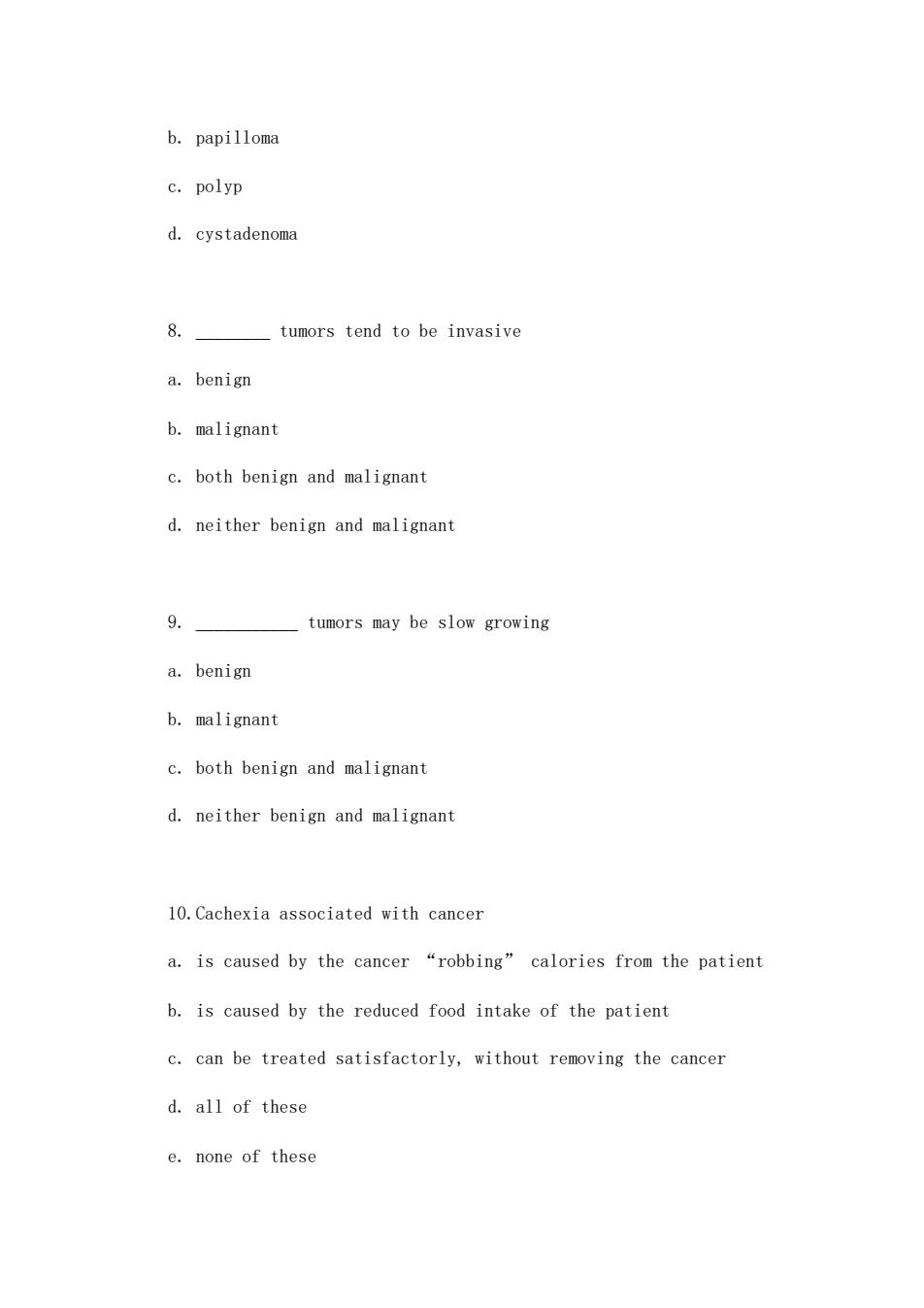
d.colon 4. tumors may be well differentiated a.benign b.malignant c.both benign and malignant d.neither benign and malignant 5. tumors are usually well demarcated a.benign b.malignant c.both benign and malignant d.neither benign and malignant 6.Cervical cancer is associated with a.T-cell leukemia virus b.Epstein-Barr virus c.Papillomavirus d.Hepatitis B virus 7.A tumor that has finger-like fronds a.adenoma
d. colon 4. _ tumors may be well differentiated a. benign b. malignant c. both benign and malignant d. neither benign and malignant 5. _ tumors are usually well demarcated a. benign b. malignant c. both benign and malignant d. neither benign and malignant 6. Cervical cancer is associated with a. T-cell leukemia virus b. Epstein-Barr virus c. Papillomavirus d. Hepatitis B virus 7. A tumor that has finger-like fronds a. adenoma

b.papilloma c.polyp d.cystadenoma 8. tumors tend to be invasive a.benign b.malignant c.both benign and malignant d.neither benign and malignant 9. tumors may be slow growing a.benign b.malignant c.both benign and malignant d.neither benign and malignant 10.Cachexia associated with cancer a.is caused by the cancer "robbing"calories from the patient b.is caused by the reduced food intake of the patient c.can be treated satisfactorly,without removing the cancer d.all of these e.none of these
b. papilloma c. polyp d. cystadenoma 8. _ tumors tend to be invasive a. benign b. malignant c. both benign and malignant d. neither benign and malignant 9. _ tumors may be slow growing a. benign b. malignant c. both benign and malignant d. neither benign and malignant 10.Cachexia associated with cancer a. is caused by the cancer “robbing” calories from the patient b. is caused by the reduced food intake of the patient c. can be treated satisfactorly, without removing the cancer d. all of these e. none of these